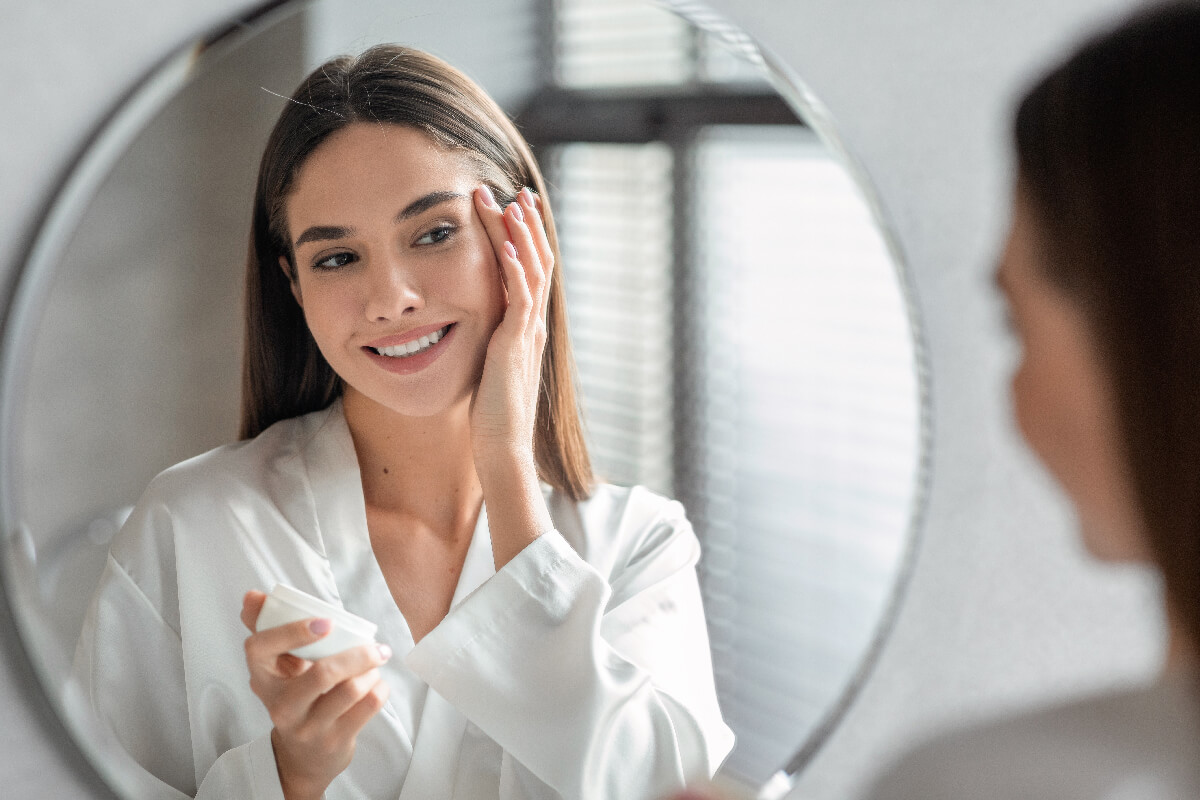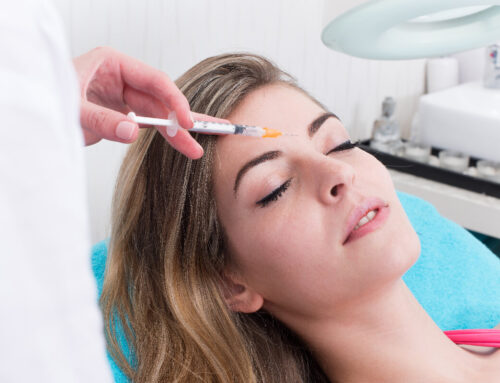Botox appears to be a magical treatment for a first-timer. After all, a single Botox treatment can reduce wrinkles and lines on the face that may not have responded to other anti-aging treatments like moisturizers and skin creams. It’s not surprising that our patients frequently ask us, “So how exactly does Botox work on my wrinkles?” given how potent and effective Botox can be. Interested in knowing more about botox? Please, click here.
Does Botox Work If You Have Wrinkles Already?
Botox is one of the most loved and frequently applied treatments for facial wrinkles. The primary FDA-approved use of Botox injections is to smooth out facial wrinkles and fine lines, such as laugh lines, crow’s feet, frown lines, etc. There are mainly two types of wrinkles: DYNAMIC wrinkles and STATIC wrinkles. Before you decide on Botox, we’ll examine to see if you have the kind of facial wrinkles that can benefit from Botox injection.
What Are Dynamic Wrinkles?
You develop dynamic wrinkles when you smile, laugh, concentrate, squint, or do anything else that requires facial muscle movement. The most prevalent dynamic wrinkles include crow’s feet around the eyes, forehead lines, and frown lines between the eyebrows, and Botox is the most common treatment for these dynamic wrinkles. Botox contains Botulinum toxin, a substance that temporarily paralyzes muscle activity. It prevents nerves from reaching specific muscles, reducing the visibility of dynamic wrinkles.
What Are Static Wrinkles?
Static wrinkles result when your skin loses collagen and elastin. Elastin and collagen, which give skin its taut, elastic, hydrated, supple, and smooth appearance, are abundant in young skin. Several factors such as aging, sun exposure, and environmental toxins cause the skin to lose its natural collagen and elastin. Static wrinkles are caused by a lack of collagen and elastin over time. They include fine lines on the corners of the mouth, nasolabial folds, cheeks, etc., Botox can also reduce static wrinkles, but not as effectively as dynamic wrinkles. If you have static wrinkles, you may consider our Picoway laser which can boost collagen production or dermal fillers.
What Conditions Does Botox Treat?
Botox is used to treat all kinds of facial wrinkles and fine lines. However, as we have already mentioned, Botox works best on dynamic wrinkles caused by muscle movement, such as:
- Moderate to severe fine lines: These are the 11s between your eyebrows when you frown.
- Moderate to severe crow’s feet: These are the fine lines that appear around your eyes when you squint or smile.
- Moderate to severe forehead lines. These are the lines on your forehead when your skin wrinkles and folds while raising your eyebrows.

How to Reduce Wrinkles With Botox
Botox works by preventing the brain from sending nerve signals to the muscles where the nerves are located. Even when you’re unaware of it, your facial muscles constantly move, especially those near your eyebrows. These repeated movements, such as frowning, squinting, and furrowing your brows, can cause the frown lines and wrinkles and Botox will be able to soften those lines. The appearance of forehead wrinkles, frown lines, and even crow’s feet almost immediately improves when the active ingredient in Botox blocks those nerve signals, which helps those muscles to relax.
Who Can Receive Botox Injections?
Only a healthy person who is at least 18 years or older should receive Botox. People who should not receive the injection include pregnant or nursing women, those with neuromuscular conditions such as myasthenia gravis and others who:
- Have weak facial muscles.
- Have deep facial scars, ptosis (drooping eyelids), or asymmetric facial features (when the features on both sides of the face are different).
- Have skin issues such as an infection close to the injection site.
Discuss your medical history, prescription medications, and supplements you take with your doctor. Botulinum toxin injections may be beneficial but have adverse effects or lead to other health issues. Headache, eye redness, tearing, or irritation, as well as pain or bruising where the injection was given, are typical side effects. If you take blood thinners or aspirin, this is more likely to occur. Before receiving a botulinum toxin injection, inquire with your doctor about whether you should stop taking those medications. Alcohol consumption 24 hours before treatment also makes bruising and redness worse. Ptosis is a less frequent but extremely bothersome side effect (drooping eyelids). When the results of the botulinum toxin wear off in a few months, ptosis should disappear. For approximately 4 hours following the injection, you may also be instructed to sit upright (not lie down) and refrain from pressing on the treated area. Additionally, your doctor might advise against exercising for 24 hours following treatment.
Should I Get Botox?
You are a good candidate for Botox injections if you have mild to moderate frown lines and forehead lines (those vertical wrinkles between the eyebrows). Patients whose wrinkles have not been deeply ingrained for decades respond best to Botox. It is much more successful to begin in your 30s, 40s, or even 50s than to use Botox for the first time in your 60s or 70s. But many adults of all ages who experience success with Botox keep using it for years to prevent wrinkles.
How Frequently Do I Need Botox?
With time, the effects of Botox may last three to four months or longer. That means you should schedule a Botox session regularly, 2 or 3 times per year if you want to maintain your Botox results.
Get Rid of Your Wrinkles With Botox Treatment Today
Thinking of getting Botox? Reach out to us today at Eye Candy Vision and Beauty Clinic, Arcadia. We use innovative technology to achieve non-surgical results that look natural.
MEDICAL ADVICE DISCLAIMER: All content in this blog and description including: information, opinions, content, references and links is for informational purposes only. The Author does not provide any medical advice on the Site. Accessing, viewing, reading or otherwise using this content does NOT create a physician-patient relationship between you and its’ author. Providing personal or medical information to the Principal author does not create a physician-patient rela-tionship between you and the Principal author or authors. Nothing contained in this blog or it’s description is intended to establish a physician-patient relationship, to replace the services of a trained physician or health care professional, or otherwise to be a substitute for professional medical advice, diagnosis, or treatment. You should consult a licensed physician or appropriately-credentialed health care worker in your community in all matters relating to your health.





